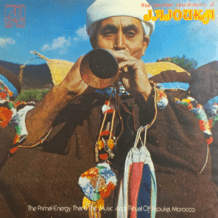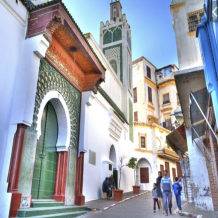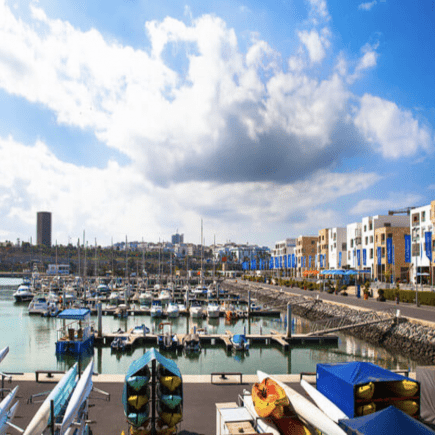
Discover Salé, Rabat’s Sister City
Morocco insiders know that Salé, a commuter town across the bridge from Rabat often gets neglected by tourists yet its rich history is worth exploring. Dating back to the 12th century, the Almohads, Spanish, Portuguese, Dutch, and Jews have all left their mark on Salé. The small, urban town also played the part of Morocco’s more recent history by hosting the first demonstrations against the French; and Morocco’s government is filled with politicians, decision-makers, and royal advisors from Salé. Raphael Ankawa, Chief Rabbi of Morocco (1848-1935); former secretary of state Saad Hassar; and Houcine Slaoui who had a large role in crafting Chaabi songs, are just a few names from the town.
Salé’s Bouregreg Marina
On a historical tour of Salé, the best place to begin is at the Bouregreg Marina, whose port hosts 240 boats that arrive daily from across the Atlantic Oceanfront. The port has been active since the 17th and 18th centuries when pirates made both sides of the Bouregreg River their hub. Coupled with its neighbor Rabat, the Salé port served as one of the most important trading centers in Morocco. Benjamin and Joseph Cohen, Dutch Jews, were two of the most prominent traders in Salé. Jews traded everything from animal skins, slaves, dates, linen, indigo, and gold dust; with the Flemish they traded weapons.
Today the Salé Bouregreg area is getting an image makeover that will help bring all it’s architectural gems and history to light. Since 2008 the strip has been operational and in recent years the real estate project Bab Al Bahr has envisioned a plan for the Marina to be lined with international restaurants, boutiques, entertainment, recreational areas, a hotel, and luxury residences. Before entering the ancient Salé kasbah, stop for coffee on the strip and take in the picturesque views across the river: Rabat’s Hassan Tower, Kasbah of Oudayas, Chellah necropolis.
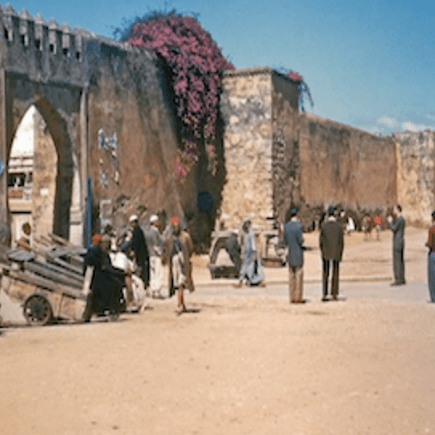
Explore the Mellah (Medina)
A big part of Salé ’s history includes a Jewish community, who have held a long presence in Salé. Just a 10-minute walk from the Bouregreg Marina, you can enter the gate Bab Mellah (also known as Bab Lemrissa) and explore the Mellah where the Jews once lived.
Salé’s connection with Jewish heritage can be traced to the 2nd century with the discovery of a Jewish tombstone. During the 13th century many refugees from Spain and Portugal moved to Salé, some of whom were Jewish. The Jews built a strong economy for themselves and were made an exception from looting after Salé was affected by both the 1755 Lisbon Earthquake and the Famine of 1799. Governor Abd Allah Bargash convinced the Sultan Moulay Yazid to accept a large payment from the Jews in exchange for their peace and safety. From 1807 onwards, Jews were separated into two Mellahs, one in Salé and the other in Rabat.
Jews from Sale also held roles in the government; Moses ben Attar was the banker for Warrior King Moulay Ismail ibn Sharif; together they negotiated a treaty with England. Salé was also an active place in Yeshivas. Graduates from these orthodox schools include kabbalist Rabbi Chaim b. Moses Attar; author Or HaChaim; and several Rabbis.
In 1905, The Alliance Israelite Universelle opened a school in Rabat, then another opened in Salé in 1913; by 1927 most Jewish students were learning in an AIU school. There is a tomb in Sale for Rabbi Raphael Encaoua who was appointed chief rabbi and head of the Jewish courts for Morocco; his son Rabbi Michael Encaoua was the last chief rabbi of Morocco.
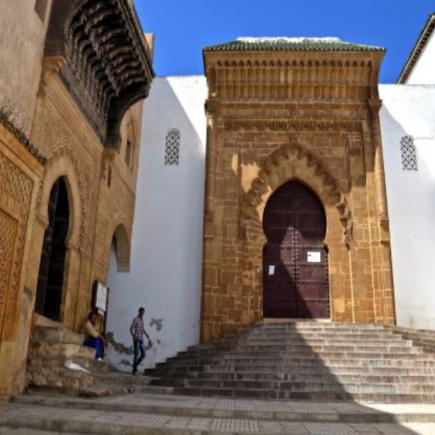
Monuments And Shrines
Salé is home to many historical sites. After Exploring the Mellah, discover ancient monuments, shrines, throughout the Medina. Salé is home to the third-largest mosque in Morocco, after the Hassan II Mosque in Casablanca and Al Qaraouiyine in Fes. Heading in the direction of Bastion des Larmes, the Great Mosque of Salé is located next door to the Medersa des Merinides. The Quranic school displays a muqarnas with a cedar wood ceiling carved during the Merinid era. For those fascinated with Islamic architecture it is worth the 60 dirham entrance fee; the muqarnas rivals the 11 extraordinary places to see Islamic architecture in Morocco.
Another important landmark is the mausoleum for Sidi Abdellah Ben Hassoun who was the town’s patron saint until his death in 1604. His tomb, located right after the Medersa on Zanqat Sidi Abdellah ben Hassoun has been called magnificent. Finally, don’t miss the Mosqué Sheikh Zayed, while not as famous as the Great Mosque, the magnificent pearl color building is built in a clean modern Islamic style. It faces the Rabat beach. After exploring the medina, stroll along the beach.
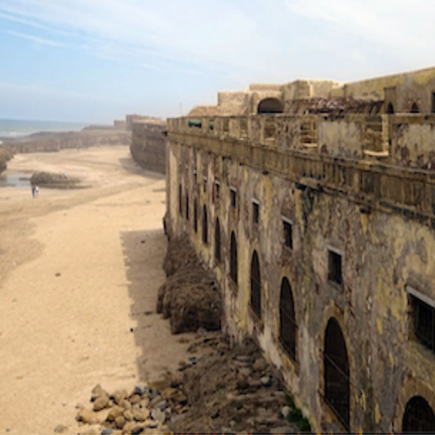
Bastion Des Larmes (Walls of Tears)
At the far end of the medina overlooking the Atlantic Ocean, sits a medieval military bastion that was built by Salé pirates to hold the slaves intended for sale in North Africa. Built-in 1261 by Sultan Merinida Abu Yusuf and subsequently refurbished to ensure defense. Salé was an important strategic and commercial center in the 13th century. The name of this bastion comes from the memory when thirty-seven ships of the Castilian fleet of King Alfonso X of Spain attacked the city during a local festival. There was a massacre and following 3,000 of its inhabitants were taken to Seville as slaves. The city burned and since has been referred to as the Bastion of Tears. This important bastion is an example of how historically relevant Salé is, yet still neglected. A few years ago the Au Seige de L’Association Bouregreg based in Salé-Rabat launched an electronic party on top of the bastion. It was Morocco’s first Kasbah party and attracted visitors from all over the world. The aim was to help put Salé back on the global tourist map.
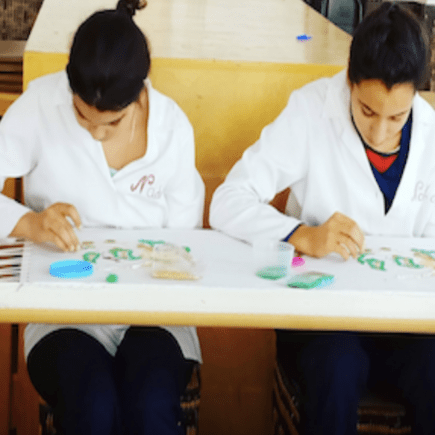
Souks of Sale
Salé has a strong pottery and artisan scene however it is not well known. The Oulja Souk can be discovered just a 10-minute drive from Sale’s medina. It is near the Oulja craft complex along Route Ain Houalla. Within the Salé medina itself Souk Lakbir is the largest square in the medina. It was used as an auction ground to sell everything from clothes to Christian slaves. Today it sells traditional djellabas, slippers, and other fabrics you can buy and bring to a tailor to design your own clothes. Other ways the Sale’s artisan past is emerging into the 21st century, can be seen at the Ecole de Broderie. Launched in 2016 by Moroccan designer Fadila el Gadi, the embroidery school teaches underprivileged children the lost art of stitchery; it is located along Avenue Abdelkrim el Khattabi Rabat.
For more information on Sale or how to spend 24 Hours in Rabat



